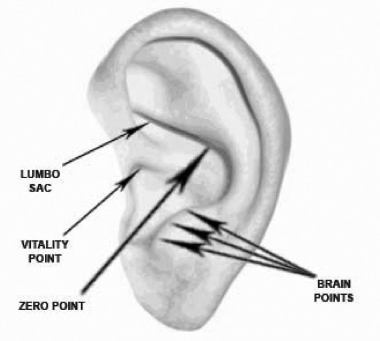Authors: Jamuna Rangachari
Dancing with Life (15 page)
Benefits:
Improves the balancing mechanism in the brain. The cerebellum, involved with balance, is also associated with nervous co-ordination, cognitive learning, memory, impulse control and mood upliftment. This pose has many emotional culturing benefits as well.
Simhagarjasana
(roaring lion pose):
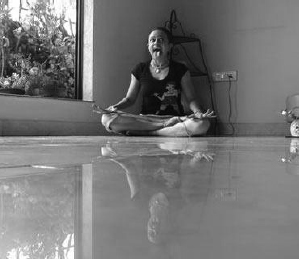
Procedure:
This may be done seated or standing. Sit in any comfortable position. If standing bend forward lightly, bending the legs at the knees and placing the hands on the thighs; fingers spread out. Even when seated, the hands have to be placed on the knees or thighs.
Inhale and exhale twice deeply. After the third inhalation, exhale forcefully, pushing the tongue out and down; make sure your eyes are looking upwards; the body is taut as much as possible with the stomach caved in and held firmly. Fingers should also become taut, even if you are standing.
Hold the pose to the count of five. Release, and repeat a few times. The number of times you do this and the duration of the pose may be increased with practice. You may hold the pelvic muscles and the anal muscles in the final hold. For those with no breathing problems or heart problems, you may also hold your breath for a few seconds.
Benefits:
This is one of the most therapeutic poses. It reduces the chances of you catching a fever or contracting a cold. It also helps in removing lethargy. Moreover, it has anti-ageing properties; i.e. helps in removing wrinkles from the face. It offers relief in halitosis (bad breath). It works the entire body out in a powerful way despite its deceptive simplicity. If you learn to hold the pelvic muscles tight, it will help you deal with the problem of incontinence as well.
Vayu vardhak asana
(hand gesture to increase the air element):

Procedure:
Sit in any meditative pose (this can also be done while seated on a chair). Shut your eyes. Touch the tips of your index finger to the tip of your thumb. Extend the other fingers. Do this for each hand. Hold for a minimum for five minutes (you may combine it with
pranayama
or
dhyana
/meditation practices). The mudra may be held up to 15 to 30 minutes, split over different sessions spread over the day. Ideal time of the day, since it involves the air element, is when the air element flows in our body – from 2 to 6 a.m. or 2 to 6 p.m. Though it is ideally done in a meditative fashion, those who are rushed for time may also do this while commuting, resting or while engaged in other activities.
Benefits:
It increases the nervous energy, introducing a sense of creativity. Used universally for meditation, it is said to increase the sense of
vairagya
or dispassion. It is a powerful pose for all disorders of the nervous system.
Clearly the list is incomplete. Yoga has much more to offer, but it would be ideal to work with an expert who creates a chart of practices that can help cover the body more completely. The chart should be personalized.
A
CUPRESSURE
BY
K
ETAN
S
HAH
Acupressure is the science of healing the human body by applying adequate pressure at accurate points (called nerve endings) on the body with the help of the thumb. These nerve endings are present on the hands, feet, spine and the ears. Acupressure, unlike acupuncture, is a non-invasive form of therapy that can be practiced by anyone on themselves and practically has no side effects.
Acupressure helps in controlling MS with the activation of the points mentioned below. Press the given points eight to ten times, three times a day, with a half an hour gap before or after a meal.
- Tips of finger, gall bladder and lymph gland. Pressing on these points help to boost the immunity of the body.
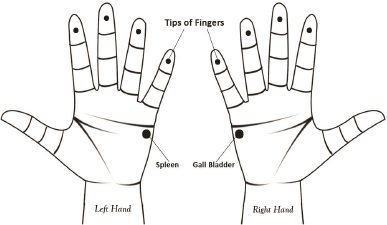
- Spleen 1 and Spleen 6 (4-finger-widths above the inner ankle bone) on the feet are the pressure points to control and manage the central nervous system.

- Pressing on the points Liver 1 and Liver 3 on the feet helps control the muscles of the body. It helps in reducing muscle spasms.
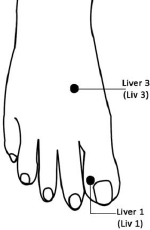
- Pressing on the points shown below help control parts of the brain, the pituitary and the pineal gland that can get affected due to MS.
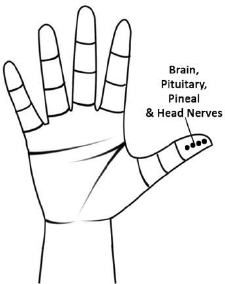
- To strengthen the neck which helps in reducing the imbalance while walking and turning around, press on the points shown below.

- Press on the point as shown below so that the brain does not affect the urinary bladder, making it voluntary.
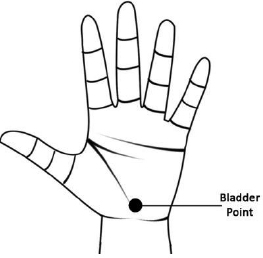
- Pressing on the points shown below can help in reducing emotional stress and even help with mild depression.
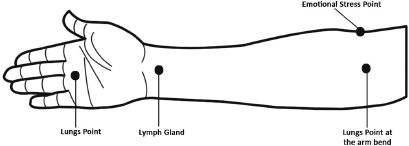
Not all individuals have the same symptoms and hence it is recommended that a combination of the above points be suggested by an acupressure practitioner.
E
AR
A
CUPUNCTURE
BY
D
R
A
BID
K
HAN
I had heard about ear acupuncture some time back and knew of people who always kept small needles or seeds on certain points on their ears to recover from various illnesses. So when I asked my acupuncturist if I could do this on myself and recommend it to other MS patients, he agreed and shared the following diagram with me:
